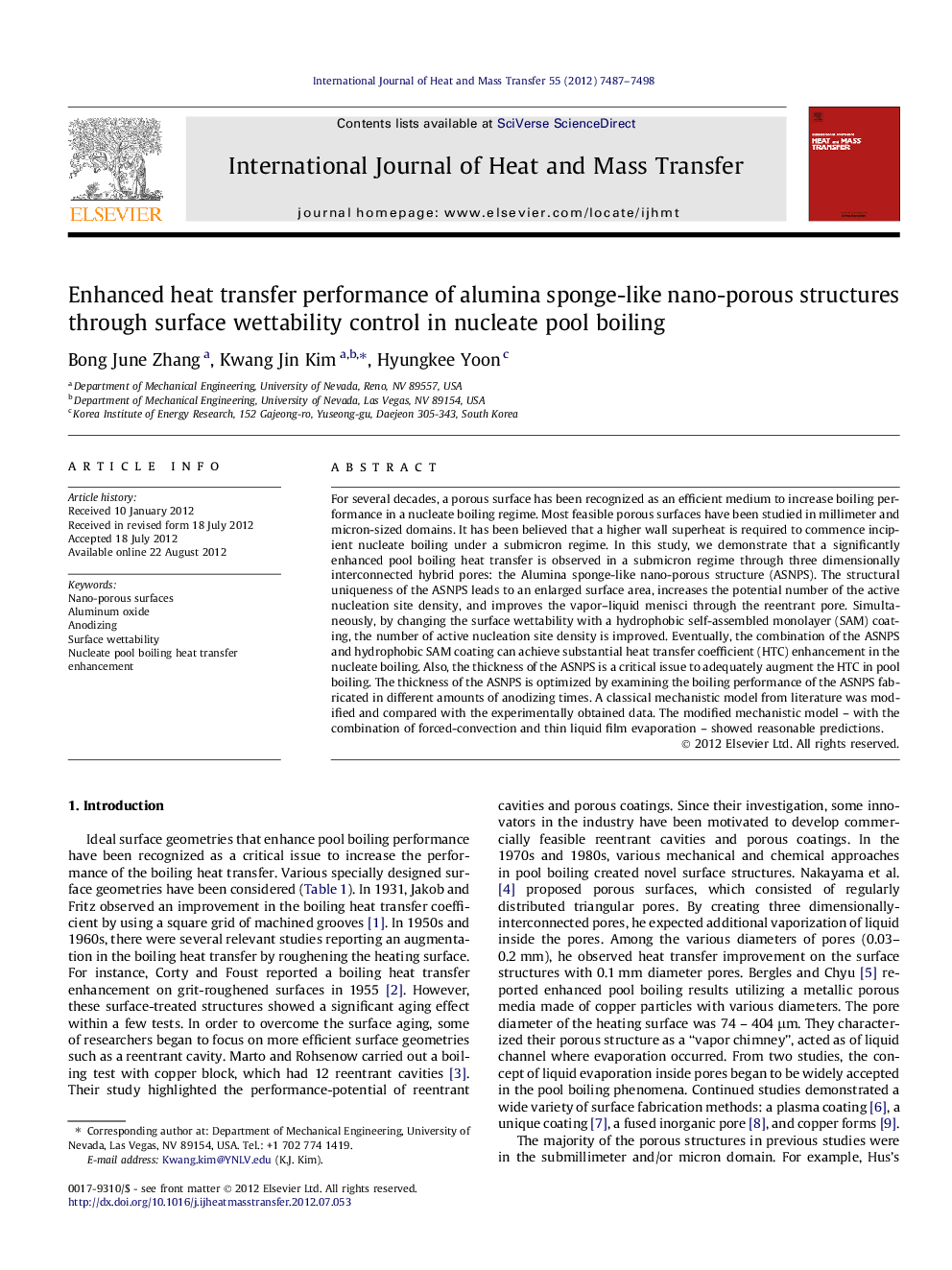| Article ID | Journal | Published Year | Pages | File Type |
|---|---|---|---|---|
| 7059266 | International Journal of Heat and Mass Transfer | 2012 | 12 Pages |
Abstract
For several decades, a porous surface has been recognized as an efficient medium to increase boiling performance in a nucleate boiling regime. Most feasible porous surfaces have been studied in millimeter and micron-sized domains. It has been believed that a higher wall superheat is required to commence incipient nucleate boiling under a submicron regime. In this study, we demonstrate that a significantly enhanced pool boiling heat transfer is observed in a submicron regime through three dimensionally interconnected hybrid pores: the Alumina sponge-like nano-porous structure (ASNPS). The structural uniqueness of the ASNPS leads to an enlarged surface area, increases the potential number of the active nucleation site density, and improves the vapor-liquid menisci through the reentrant pore. Simultaneously, by changing the surface wettability with a hydrophobic self-assembled monolayer (SAM) coating, the number of active nucleation site density is improved. Eventually, the combination of the ASNPS and hydrophobic SAM coating can achieve substantial heat transfer coefficient (HTC) enhancement in the nucleate boiling. Also, the thickness of the ASNPS is a critical issue to adequately augment the HTC in pool boiling. The thickness of the ASNPS is optimized by examining the boiling performance of the ASNPS fabricated in different amounts of anodizing times. A classical mechanistic model from literature was modified and compared with the experimentally obtained data. The modified mechanistic model - with the combination of forced-convection and thin liquid film evaporation - showed reasonable predictions.
Related Topics
Physical Sciences and Engineering
Chemical Engineering
Fluid Flow and Transfer Processes
Authors
Bong June Zhang, Kwang Jin Kim, Hyungkee Yoon,
